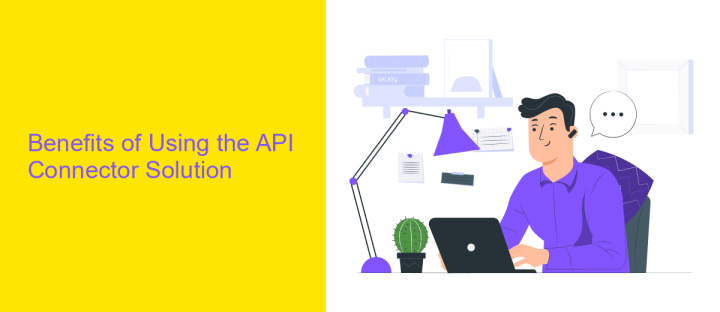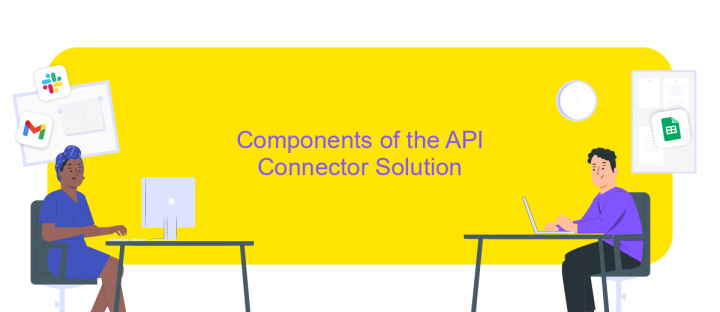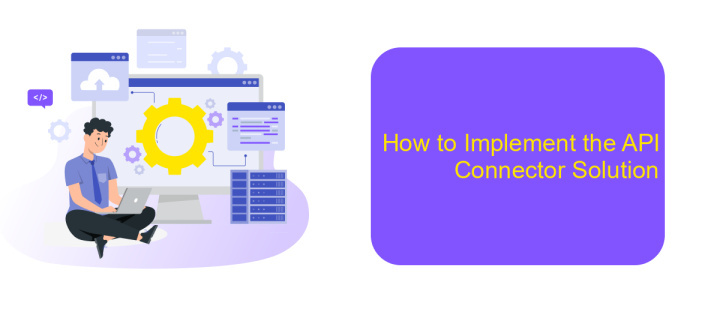API Connector Solution
In today's rapidly evolving digital landscape, seamless integration between applications is crucial for business efficiency and innovation. An API Connector Solution serves as a vital tool, enabling disparate systems to communicate effortlessly. By bridging the gap between various software platforms, it streamlines data exchange and enhances functionality. This article explores the benefits and features of API Connector Solutions, highlighting their role in optimizing business operations and fostering technological growth.
About the API Connector Solution
The API Connector Solution is a versatile tool designed to seamlessly integrate various applications and services by facilitating communication between different software systems. It serves as a bridge, enabling data exchange and enhancing functionality without the need for extensive coding or manual intervention. This solution is particularly beneficial for businesses looking to streamline operations, improve efficiency, and foster innovation through interconnected platforms.
- Enables seamless integration of diverse applications.
- Facilitates efficient data exchange between systems.
- Reduces the need for complex coding and manual processes.
- Enhances business operations and efficiency.
- Supports innovation through interconnected platforms.
By utilizing the API Connector Solution, organizations can unlock new potentials and capabilities, ensuring that their technological ecosystem is agile and responsive to changing needs. The solution supports a wide range of APIs, offering flexibility and scalability to meet the demands of growing businesses. As a result, companies can focus on strategic initiatives, knowing that their integration needs are handled efficiently and effectively.
Benefits of Using the API Connector Solution

Implementing an API Connector Solution offers numerous advantages for businesses seeking seamless data integration and automation. One of the primary benefits is the simplification of complex integration processes. By using an API connector, companies can easily link disparate software systems, ensuring efficient data flow and reducing the need for manual data entry. This not only saves time but also minimizes the risk of human error, leading to more accurate and reliable data management. Furthermore, API connectors provide scalability, allowing businesses to expand their operations and integrate additional applications without significant technical overhead.
Another significant benefit is the enhancement of productivity and collaboration. With an API Connector Solution, like ApiX-Drive, organizations can automate routine tasks, freeing up valuable human resources to focus on more strategic activities. This leads to improved operational efficiency and faster decision-making processes. Additionally, such solutions often come with user-friendly interfaces and pre-built connectors, making it easier for non-technical users to set up and manage integrations. This democratization of technology empowers teams to work more collaboratively, as they can access and share data across platforms effortlessly, fostering a more connected and agile business environment.
Components of the API Connector Solution

The API Connector Solution is an essential tool for seamless integration between different software applications. It acts as a bridge, allowing data and functionalities to be shared effortlessly. This solution is composed of several key components that work together to ensure efficient communication and data exchange.
- API Gateway: This component manages and directs API requests, ensuring they reach the correct destination. It also handles security, authentication, and rate limiting.
- Data Transformer: Responsible for converting data formats to ensure compatibility between different systems. It helps in transforming incoming and outgoing data to meet the required specifications of each application.
- Connector Interface: Provides a user-friendly interface for developers to configure and manage API connections. It simplifies the process of setting up integrations by offering visual tools and templates.
- Monitoring and Analytics: This component tracks API performance, usage statistics, and error rates, providing insights for optimization and troubleshooting.
These components collectively enhance the efficiency and reliability of API integrations. By leveraging this solution, businesses can streamline operations, reduce manual efforts, and enhance collaboration across various platforms. The modular nature of the API Connector Solution allows for flexibility and scalability, accommodating the evolving needs of modern enterprises.
How to Implement the API Connector Solution

Implementing an API Connector Solution involves a systematic approach to ensure seamless integration with existing systems. First, identify the APIs you need to connect with and gather all necessary documentation. Understanding the data flow and endpoints is crucial for effective implementation.
Next, design the architecture that will support the API integration. Consider factors such as security, scalability, and error handling. Establishing a robust architecture will help in managing data efficiently and maintaining system integrity.
- Set up the development environment and necessary tools.
- Create authentication mechanisms for secure API access.
- Develop and test the API connector to ensure functionality.
- Monitor and log API interactions for troubleshooting.
Finally, deploy the API connector solution in a live environment. Continuous monitoring and optimization are essential to adapt to any changes in the API or system requirements. Regular updates and maintenance will ensure the solution remains effective and reliable over time.
- Automate the work of an online store or landing
- Empower through integration
- Don't spend money on programmers and integrators
- Save time by automating routine tasks
Case Studies
In a recent project, a leading e-commerce company sought to enhance their operational efficiency by integrating multiple sales platforms and CRM systems. They turned to an API Connector Solution to bridge these disparate systems, ensuring seamless data flow and real-time updates. By utilizing the capabilities of ApiX-Drive, they were able to automate data synchronization, reducing manual errors and saving significant time. This integration not only improved their sales tracking but also enhanced customer relationship management, leading to a 20% increase in customer satisfaction within the first quarter.
Another example involves a healthcare provider aiming to streamline patient data across various departments. By implementing an API Connector Solution, they successfully integrated electronic health records with billing and appointment scheduling systems. ApiX-Drive played a crucial role by offering a user-friendly interface and robust support, enabling the healthcare provider to achieve a unified data system. This integration resulted in more efficient patient management and reduced administrative overhead, demonstrating the transformative power of effective API solutions in complex environments.
FAQ
What is an API Connector Solution?
How can I benefit from using an API Connector Solution?
Is technical expertise required to use an API Connector Solution?
Can I integrate multiple applications using an API Connector Solution?
What should I consider when choosing an API Connector Solution?
Time is the most valuable resource in today's business realities. By eliminating the routine from work processes, you will get more opportunities to implement the most daring plans and ideas. Choose – you can continue to waste time, money and nerves on inefficient solutions, or you can use ApiX-Drive, automating work processes and achieving results with minimal investment of money, effort and human resources.


